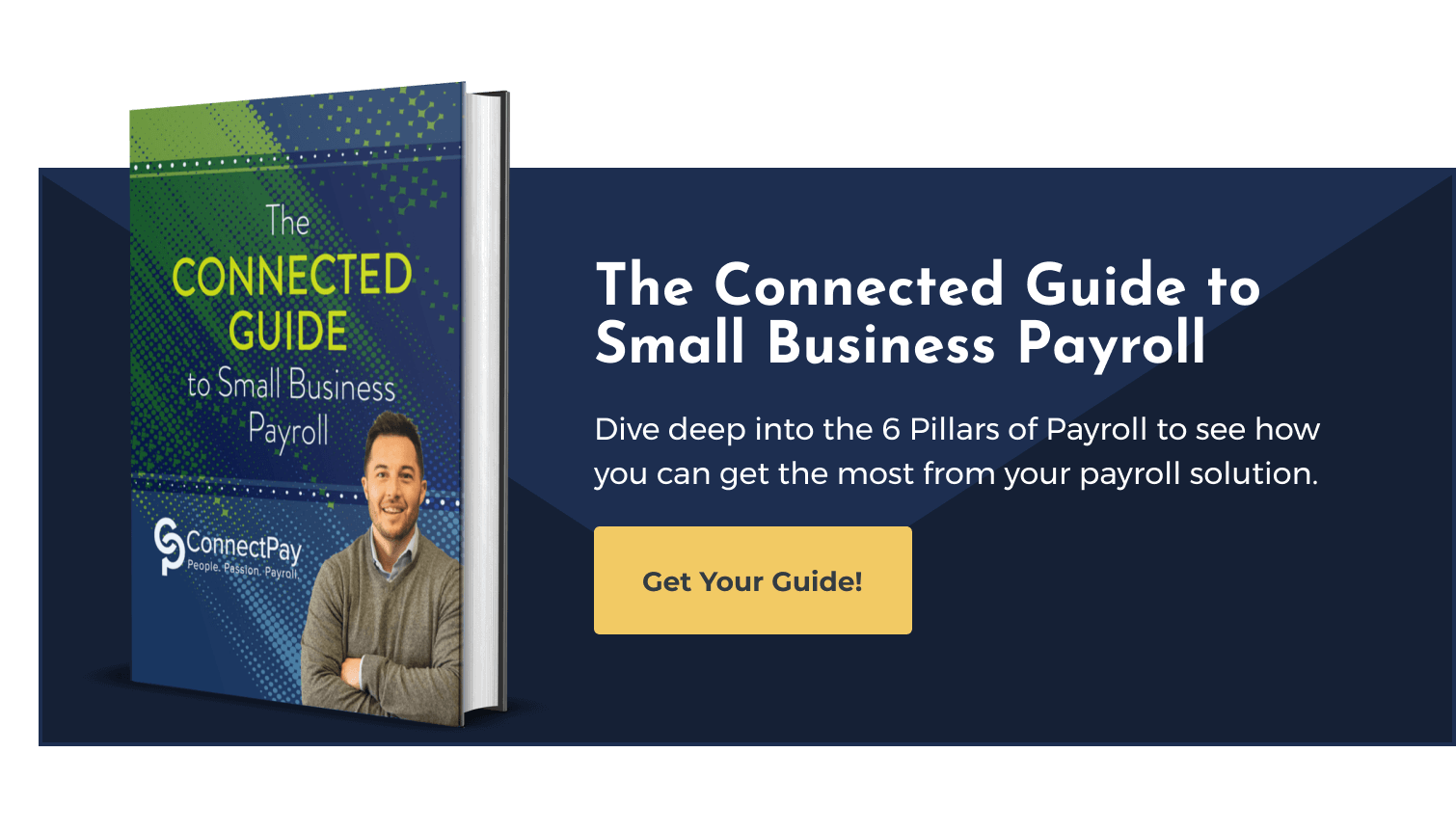How To Pay a 1099 Employee: Independent Contractor Basics

Tax forms, regulations, classification; do these words make you break out in a cold sweat?
You’re not alone. Paying a 1099 employee can seem complex and hard to navigate. Which forms do you need to provide? What are the timelines? What happens if you make a mistake?
But paying 1099 employees doesn’t have to feel overwhelming!
In this article, we’ll break down the process of paying a 1099 employee. We’ll cover everything from the basics to critical tax forms and the benefits of using payroll services. By the end, you’ll have the tools to handle payments to 1099 employees like a pro!
How To Pay a 1099 Employee: What Do You Need to Know?
First — it’s essential to classify workers correctly right off the bat. Misclassifying an employee will lead to owing back payments on federal and state income taxes, social security, Medicare, unemployment, and workers’ compensation. You could also face fines and penalties that could damage your business and your reputation.
Related: 1099 vs. W2: 4 Tips for Classifying Workers Correctly
Put simply; a W2 employee is a traditional full-time worker who receives a steady paycheck. They have a standard relationship with your business, working according to your schedule. You provide them with the tools they need to perform their role.
You’ll also withhold income taxes from their earnings. Benefits such as health insurance, retirement plans, and paid time off are often part of the package.
Alternatively, 1099 employees are self-employed individuals hired on a contract basis, also called independent contractors. Since their employers do not withhold taxes, contractors are responsible for paying their own taxes. In most cases, they do not receive benefits and have more flexibility and control over their work schedules.
Classifying a 1099 Employee
To classify an employee as a 1099 contractor, it’s best to follow IRS guidelines.
The IRS considers three main attributes: a worker’s behaviors, financial situation, and relationship with the business. For example, if you control when, how, and where they work, they’re a W2 employee. The less control you have, the more likely they will be a 1099 contractor.
1099 contractors will typically purchase their own equipment, whereas employers will provide the tools a W2 worker needs. W2 workers receive a regular paycheck; contractors are usually paid hourly or per project.
Related Read: Employment Tax Compliance: 5 Actions You Need to Take Now
The Benefits and Disadvantages of Hiring Contractors
Hiring 1099 contractors comes with unique advantages and challenges.
Benefits
- Cost-Efficiency: You save on expenses like health insurance, retirement benefits, Social Security, and Medicare taxes.
- Flexibility: You can bring contractors in for specific projects or during peak business times, then scale down when demand is lower.
- Access to talent: Regardless of your geographic location, you can access thousands of contractors. Your talent pool will be broader and potentially global.
- Reduced administrative burden: With fewer employees on the payroll, your HR team can devote more time and effort to improving employee retention.
Challenges
- Lack of control: You have limited control over independent contractors. They decide how, when, and where the work is done.
- Misclassification: Misclassifying a worker can lead to hefty fines and penalties.
- Less loyalty: Independent contractors may work for multiple clients simultaneously and not show the same loyalty or dedication as regular employees.
- Quality control and training: You can provide training to contractors, but you can’t require them to undergo it. The quality and consistency of their work may suffer as a result.
If hiring a 1099 contractor is right for your business, let’s delve into how you can pay them!
1. The 1099-MISC and 1099-NEC Forms: A Concise Breakdown
There are two forms to consider when paying 1099 contractors: The 1099-MISC and 1099-NEC.
When to Use 1099-MISC
The 1099-MISC covers diverse types of payments. Use this form to report payments not subject to self-employment tax. For example, a landlord collecting rent or a business owner rewarding clients with prizes will use the 1099-MISC form to report payments.
Additionally, medical and healthcare payments and direct sales of consumer goods for resale fall under the 1099-MISC.
When to Use 1099-NEC
The 1099-NEC form is used for reporting non-employee compensation that is usually subject to self-employment tax.
Have you hired a freelance graphic designer to give your brand a new look? Perhaps a freelance writer crafted captivating blog posts for your website? You should file the 1099-NEC if you paid any independent contractors $600 or more during the tax year.
2. Your Role as an Employer: What to Bear in Mind
As an employer, you have responsibilities to ensure compliance with IRS regulations. You can provide a smooth process when paying contractors from correct classification to tax document distribution.
Related Read: 5 Major Payroll Forms All Employers Need
The IRS issues strict guidelines and standards. If you don’t adhere to them, you open up your business to fines and penalties. Correctly classifying workers is paramount. Remember that even if you have a written contract defining a worker as a 1099 employee, the IRS doesn’t see that as sufficient proof.
Note: If you still doubt an employee’s classification, ask the IRS directly by submitting Form SS-8.
You must also understand your tax obligations. You don’t withhold taxes from the payments you make to independent contractors. Contractors are responsible for paying their taxes, including self-employment tax. Communicate this clearly to avoid any confusion or potential legal issues down the road.
Finally, one of your key roles is to issue the correct tax documents and forms to independent contractors. The IRS has a firm deadline for distributing forms: January 31st of the year following payment.
3. Process of Paying a 1099 Employee: Step-by-Step Approach
Step #1: Determine a Payment Structure
Will you pay your contractor by the hour, per project, or establish a retainer fee? It depends on the nature of the work and your agreement with the contractor. Discuss and finalize the payment structure to avoid any confusion down the road.
Step #2: Set up Timelines and Payment Terms
The contractor will fill out Form W-9, used to gather information such as their TIN (Taxpayer Identification Number), contact information, Social Security number, legal name, and legal business name. Form W-9 allows you to confirm the contractor’s tax ID, which you’ll need for reporting their payments to the IRS.
Clarify when you’ll pay the contractor. Will it be a weekly, biweekly, or monthly arrangement? Or will you pay them upon project completion? Clear and explicit payment terms and payroll schedules help ensure a smooth payment process and maintain a good working relationship between you and your contractors.
Step #3: Paying Taxes: The Who, What, and When
Social Security and Medicare: These taxes are typically the independent contractor’s responsibility, and they’re encouraged to pay estimated taxes quarterly. If any details on Form W-9 are wrong and you receive a backup withholding notice from the IRS, you must begin deducting a 24% tax from any future payments to an independent contractor.
4. Should You Use a Payroll Service to Pay Independent Contractors?
While you could pay independent contractors through accounts payable as a business expense, using a payroll service is more efficient and accurate. Payroll services and software can accommodate direct deposit and paycards, meaning fast payments for contractors.
Partnering with a payroll provider leads to more accurate payroll and avoids mistakes leading to disgruntled contractors and the IRS knocking on your door. They’re also experts in this field and stay current with all relevant tax laws and regulations. They ensure your business remains compliant, saving you from fines and penalties.
Some payroll services provide digital platforms where you can manage everything related to payroll. You can overview your payments, generate reports, and even have tax forms ready at your fingertips. And all this data is safe thanks to robust security measures.
While it’s possible to handle payroll on your own, there are so many advantages to working with a payroll provider you can trust.
How To Pay a 1099 Employee: Take the Pressure Off
And there you have it! The process is simple once you know how. Decide on a payment structure, set up timelines and terms, and pay your contractors. But as you can see, getting there is the complicated part. And it might feel like a significant burden to stay updated with tax rules and regulations.
Which is where ConnectPay comes in! As a payroll provider specializing in small businesses, we help simplify your payroll process and ensure you stay on the right side of the IRS. We take the pressure off by ensuring timely, accurate payments while complying with tax laws.
Do you still have questions about Form 1099, Form W-2, or anything related to tax? We are here to answer your questions or connect you with local experts.
Check out our free resource, The Connected Guide to Small Business Payroll, and arm yourself with essential knowledge.






